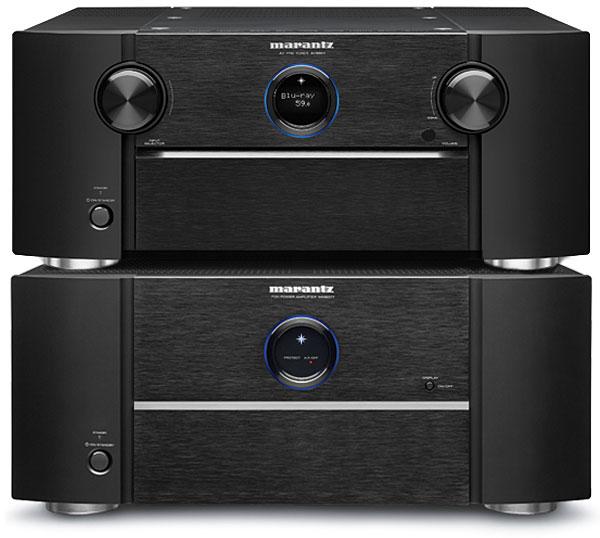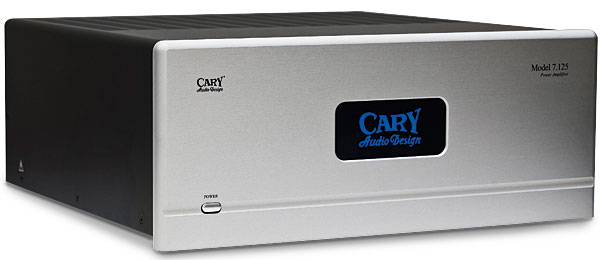Outstanding,the right combo is the key
Separates: Bring On the Heavy Artillery

Bigger is better. That’s probably the dominant argument in favor of buying a separate multichannel amplifier and surround processor instead of an A/V receiver. It’s also the wrong argument. There are three good reasons for you to choose separates: to scale up your system to a larger room, to power more-demanding speakers, or to achieve higher performance than you can get with an average AVR.
A big room, of course, demands more power—all other things being equal. And a dedicated power amp can often deliver more oomph. The designer doesn’t need to worry as much about shielding delicate preamp and surround processing circuits from interference. Thermal management is also easier when power-hungry output stages are located in a separate box.
With more robust power supplies and output stages, you can drive more demanding speakers. Most A/V receivers strain at louder volume when they power speakers that have low sensitivity ratings or a nominal impedance of fewer than 6 ohms. That’s a job better suited for a muscular dedicated amp. If you use an outboard amp, you’ll have more freedom to choose the exact speakers you want, regardless of their power requirements. You’re also free to run them full range, or at a lower subwoofer crossover point, when the amp bears more of the bass-producing burden.
Separates may also have an advantage in performance, especially in reducing distortion and noise. A surround processor that lives in its own box—far from hot, power-sucking amps—has a better shot at producing a pristine signal. Separates generally offer a qualitative edge as well as a quantitative one.
But separates aren’t for everyone. Today’s A/V receivers are no slouches, as long as you mate them with speakers of appropriate sensitivity. In fact, you could argue that a more cost-effective way to fill a large room is to buy more sensitive speakers and use them with an AVR. Another argument for AVRs is that most of them have some modern niceties often missing from separate high-end surround processors, such as room correction, low-volume listening modes, satellite radio, Internet radio, PC networking, iPod docking, and Bluetooth compatibility. Still, the larger-scale, unlimited speaker selection and that final increment of performance are the tipping points for those who demand separates. Click here for more on separates vs. receivers.
Power Amps: Types and Specs
Power amps fit into surround systems in a variety of configurations. You can buy a one-piece amp with five or seven channels. For more power, you might prefer a rack full of stereo amps or even single-channel monoblocks. There are also a few three-channel amps that you can mate with a beloved old stereo amp to bring a system up to five channels.
There are different classes of power amps. They differ most obviously in how much power they waste while idling. That aspect determines their energy efficiency, since the idling power dissipates in the form of heat, not sound production.
Class A amps run at virtually full power constantly, regardless of signal demands. This is the least efficient type of amp. Some audiophiles prize them for their warm, dynamic sound, but they are shameless power pigs. Also, they usually run hot to the touch when they operate at any volume. Most multichannel amps and AVRs are Class AB. They’re more efficient, and they run cooler at lower volumes and hotter when you play them louder.

Class G and Class H amps are more efficient than Class AB, although they’re less efficient than Class D. They use a combination of low- and high-voltage rails, switching among them in sort of the same way a car shifts gears.
The potentially most efficient type of amplifier is Class D, often mistakenly called digital amplification. These switching amps consume virtually no power when idling. They switch power to the loudspeakers at extremely high speeds, so they modulate the output and draw power only when the signal demands it. There is now a good selection of Class D multichannel amps. Class D is also being used in A/V receivers, two-channel integrated amps, and HTIBs, though we at Home Theater have found mixed performance on sound quality so far among the new offerings; read the reviews before you buy. With energy conservation increasingly on the national agenda—and thrifty consumers seeking to trim their power bills—Class D will continue to grow in the years to come.
When you read power amp specs, be skeptical. Providing a spec for one or two channels of a multichannel amplifier is just a dodge, but this is the industry norm. The specs should ideally indicate the amp’s ultimate capabilities if all channels are driven at the same time. HomeTheater provides this all-channels-driven measurement in our reviews. Power output is generally best expressed in numbers using RMS values. The input may be a continuous tone (sine wave) at any available frequency, even the extremes of the range (a tough challenge indeed). Or it could be a 1-kilohertz continuous tone from the middle of the range (much easier). It could even be a burst of signal that lasts a tiny fraction of a second (about as easy as power tests get). Each of these methods produces different results, often radically so. As such, they should be stated in the conditions of the test. The number of watts specified is usually higher into 4 ohms than into 8 ohms, but this is a practical advantage only with the appropriate speakers and an amplifier that is comfortable driving them for long periods of time without overheating or shutting down. Peak or dynamic power ratings are often meaningless because they aren’t measured to a consistent standard from brand to brand.
On our test bench, we perform all power measurements using a continuous, in-phase 1-kHz sine wave on both the left and right channels, then we move up to five, and ultimately seven channels simultaneously. This is a particularly brutal test and more stringent than almost any real-world program material would ever demand of an amplifier. But it indicates how substantial the unit’s power supply is or isn’t and gives you a sense of how much clean power the amplifier can deliver when playing complex, multichannel soundtracks at high volume. Small differences in total harmonic distortion (THD), signal-to-noise ratio, crosstalk, and other measurements may not be especially audible on program material, although large ones may be. Our best advice is to read HT’s reviews to see how much power a product really delivers under clearly stated, consistent testing conditions.
- Log in or register to post comments

















































